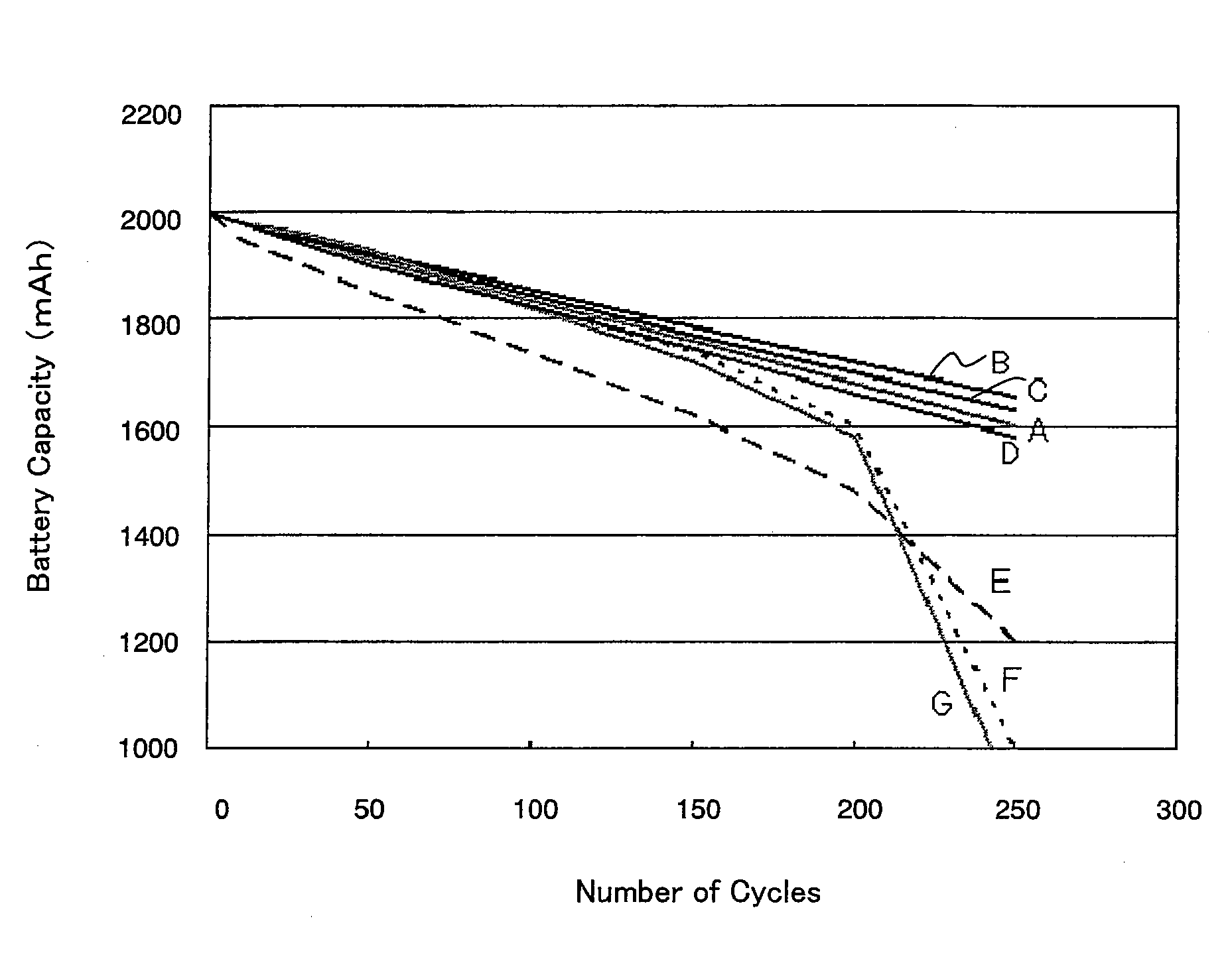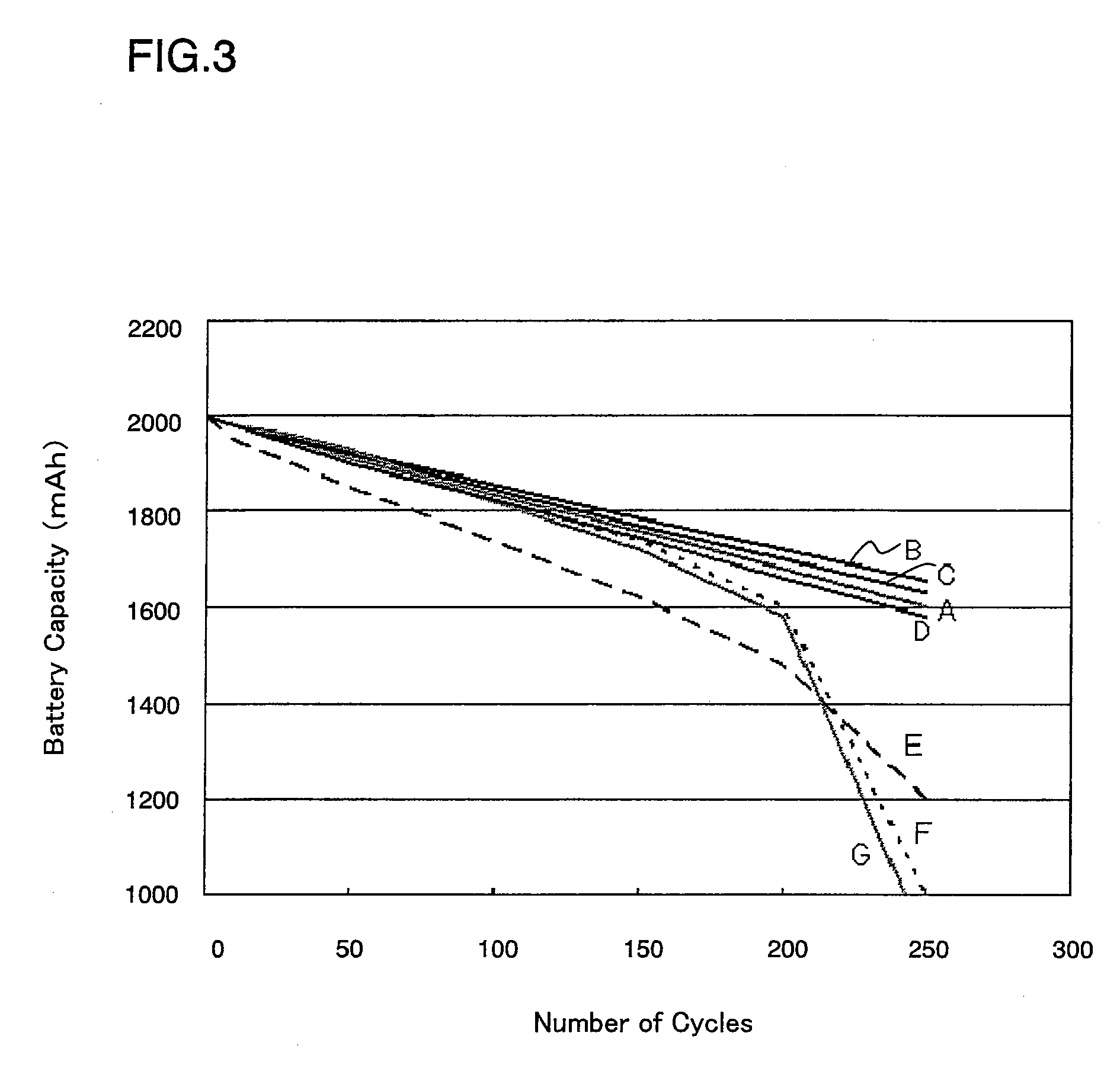Non-aqueous electrolyte secondary battery
a secondary battery and electrolyte technology, applied in the field of non-aqueous electrolyte secondary batteries, can solve the problems of insufficient electrical contact, inability to contribute, and the decline in battery capacity cannot be curbed sufficiently, and achieve excellent charge and discharge cycle life performance, the effect of preventing capacity declin
- Summary
- Abstract
- Description
- Claims
- Application Information
AI Technical Summary
Benefits of technology
Problems solved by technology
Method used
Image
Examples
example 1
(1) Positive Electrode Active Material Preparation
[0079]An aqueous solution with a metal ion concentration of 2 mol / L was prepared by adding Co and Al sulfates to a NiSO4 aqueous solution, so that the molar ratio between Ni, Co, and Al is Ni:Co:Al=7:2:1. A sodium hydroxide solution with a molar concentration of 2 mol / L was gradually dropped to this aqueous solution for neutralization, to produce a ternary precipitate having the composition represented by Ni0.7Co0.2Al0.1(OH)2 with a coprecipitation method. The precipitate was separated by filtering, washed with water, and dried at a temperature of 80° C., to obtain a composite hydroxide. The average particle size of the obtained composite hydroxide determined by a particle size distribution analyzer (product name: MT3000, manufactured by Nikkiso Co., Ltd.) was 10 μm.
[0080]This composite hydroxide was heat-treated in an atmosphere at 900° C. for 10 hours, to obtain a ternary composite oxide having a composition represented by Ni0.7Co0...
example 2
[0087]Cylindrical battery B of the present invention was made in the same manner as Example 1, except that the porous film was formed on both sides of the negative electrode surface instead of the positive electrode.
example 3
[0088]Cylindrical battery C of the present invention was made in the same manner as Example 1, except that the porous film was formed and disposed on one surface of the separator instead of the positive electrode, so as to allow the positive electrode to face the porous film on the separator surface when assembling the electrode assembly.
PUM
| Property | Measurement | Unit |
|---|---|---|
| particle size | aaaaa | aaaaa |
| particle size | aaaaa | aaaaa |
| energy density | aaaaa | aaaaa |
Abstract
Description
Claims
Application Information
 Login to View More
Login to View More - R&D
- Intellectual Property
- Life Sciences
- Materials
- Tech Scout
- Unparalleled Data Quality
- Higher Quality Content
- 60% Fewer Hallucinations
Browse by: Latest US Patents, China's latest patents, Technical Efficacy Thesaurus, Application Domain, Technology Topic, Popular Technical Reports.
© 2025 PatSnap. All rights reserved.Legal|Privacy policy|Modern Slavery Act Transparency Statement|Sitemap|About US| Contact US: help@patsnap.com



